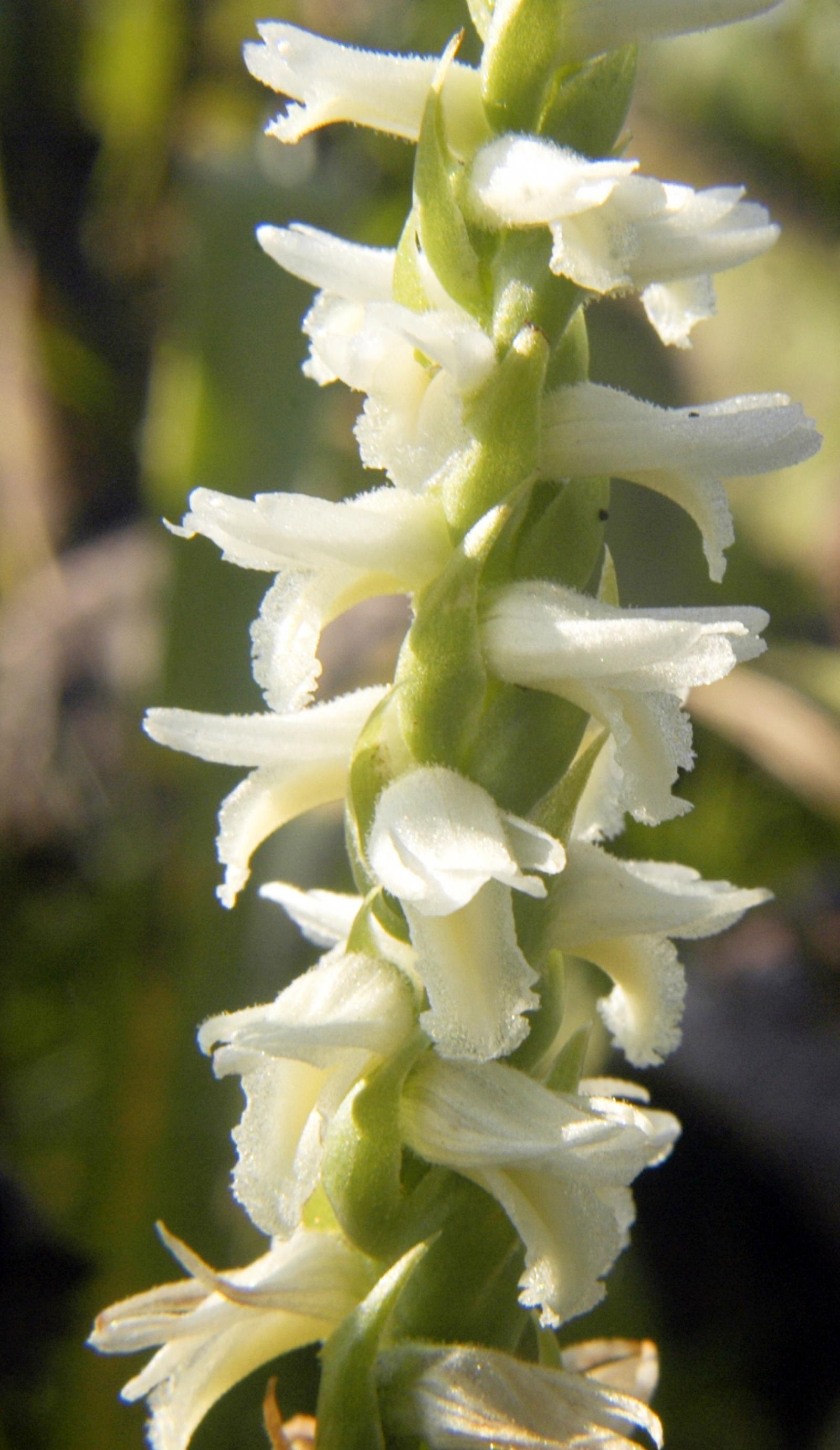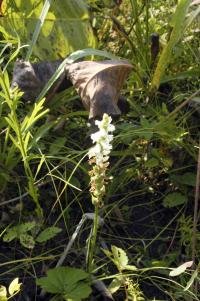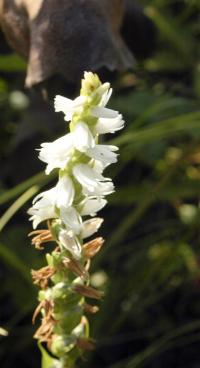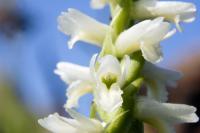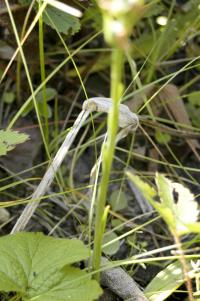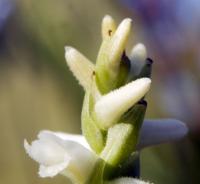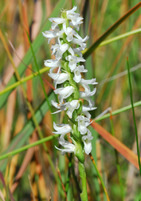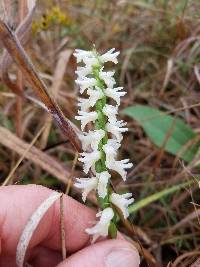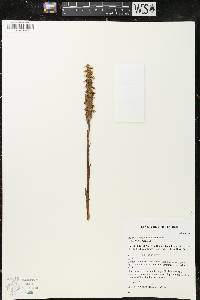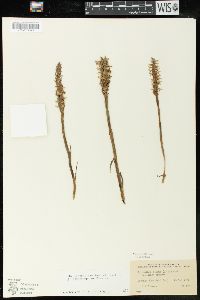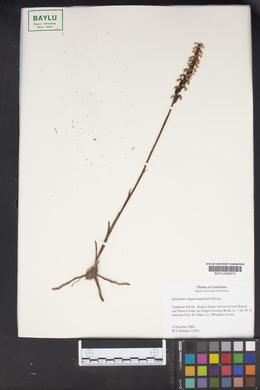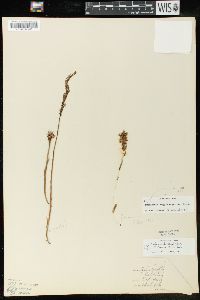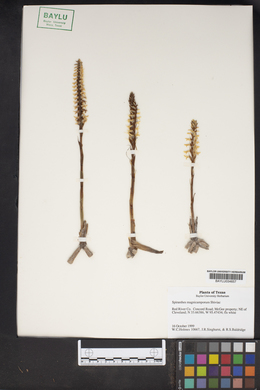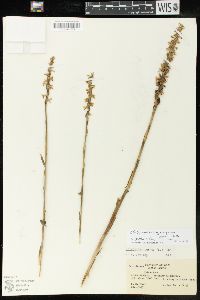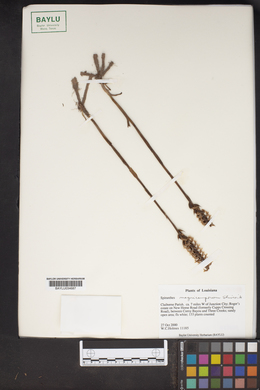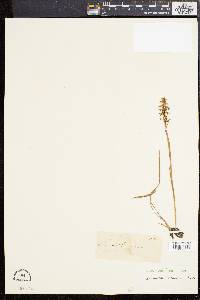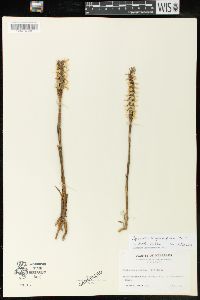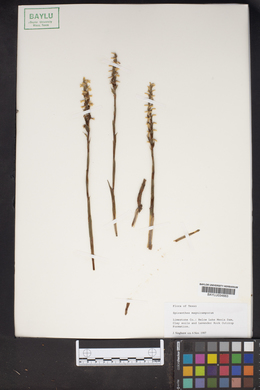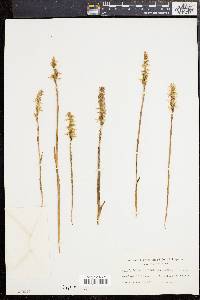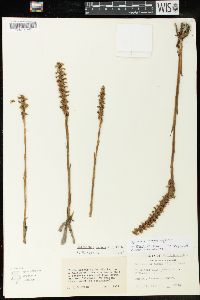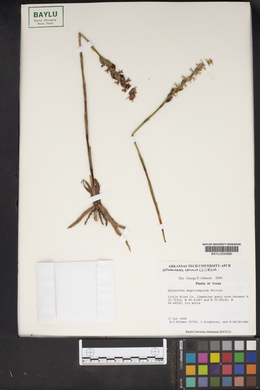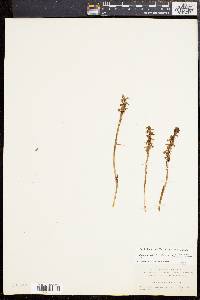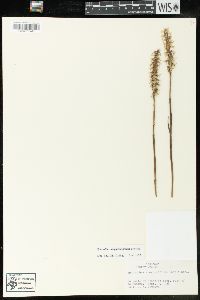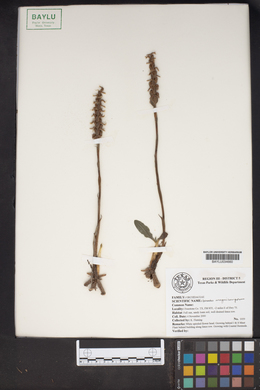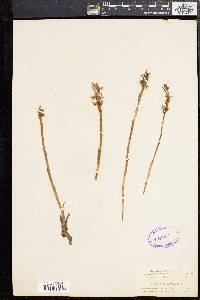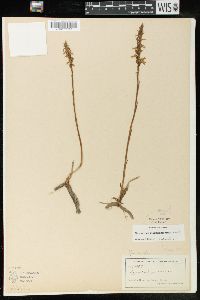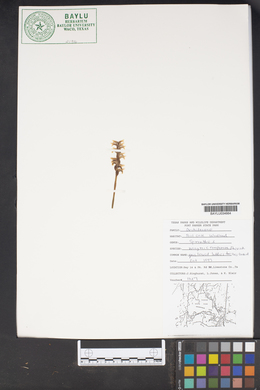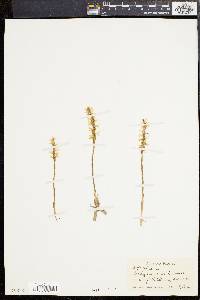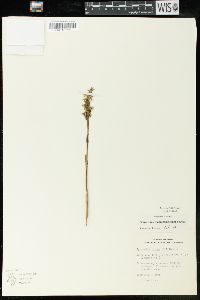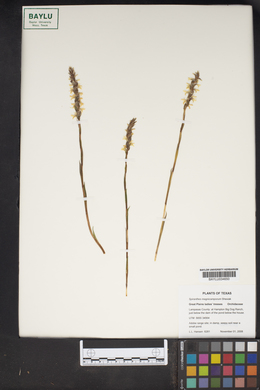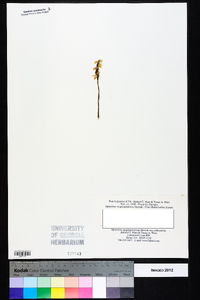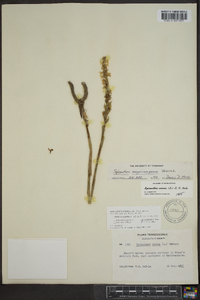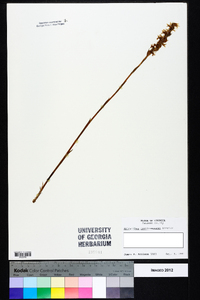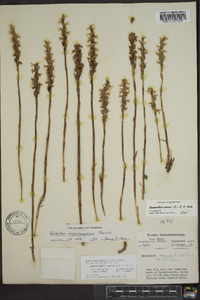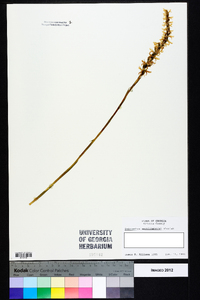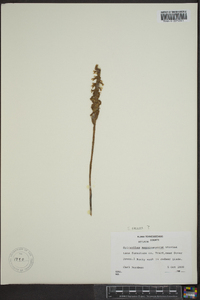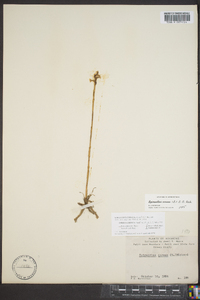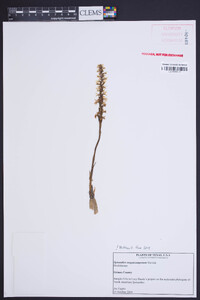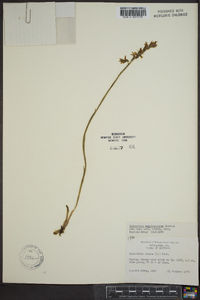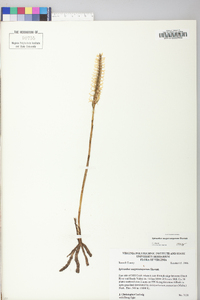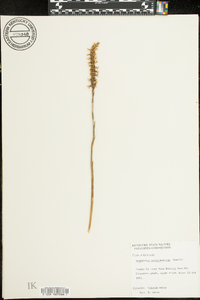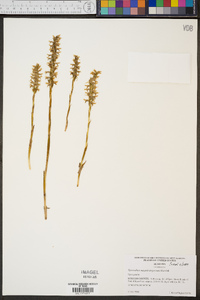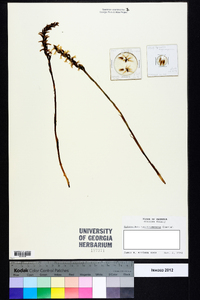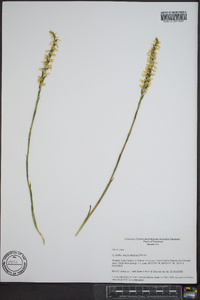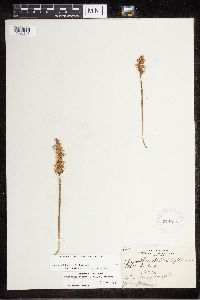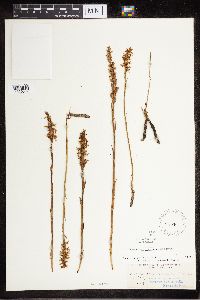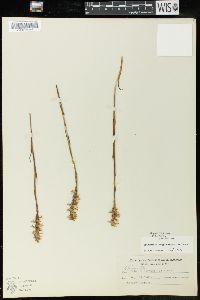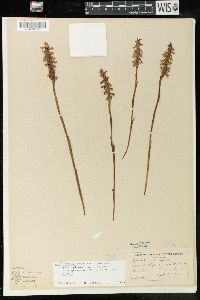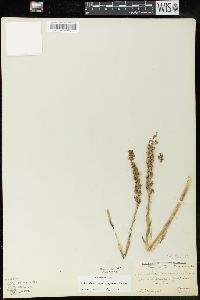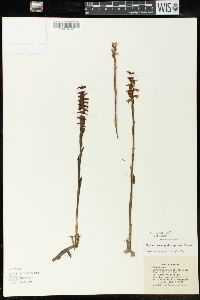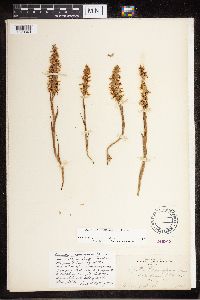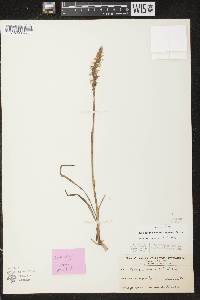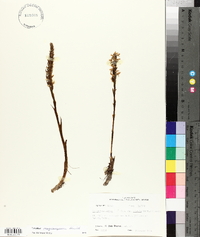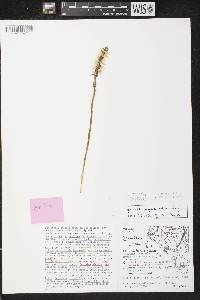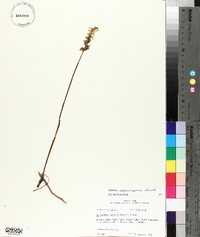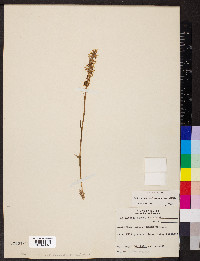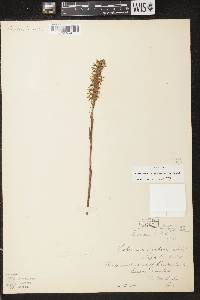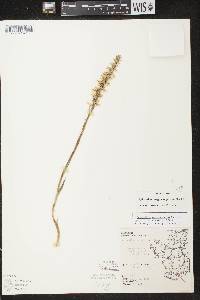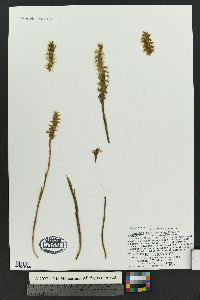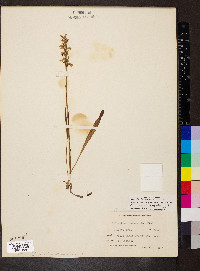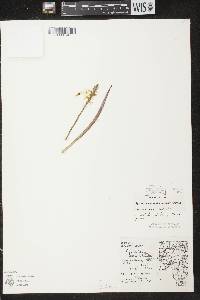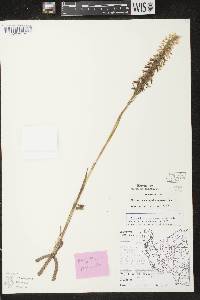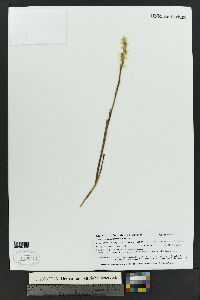Spiranthes magnicamporum
|
|
|
|
Family: Orchidaceae
Great Plains Ladies'-Tresses, more...Great Plains lady's tresses
|
Plants 7-60 cm. Roots few, descending, tuberous, mostly to 0.8 cm diam. Leaves fugaceous or rarely persisting to anthesis, basal, ascending, linear-lanceolate to oblanceolate, to 16 × 1.5 cm. Spikes usually very tightly spiraled, 3-4 flowers per cycle of spiral; rachis moderately pubescent, some trichomes capitate, glands obviously stalked (longest trichomes 0.2-0.52 mm). Flowers abruptly nodding from base, white to ivory, gaping, lip not strongly curving from claw, not urceolate; sepals distinct to base, 5-14 mm; lateral sepals wide-spreading, commonly ascending above flower; petals linear to lance-oblong, 4.9-13 mm, apex acute to obtuse; lip commonly yellow centrally, ovate to oblong, 4.9-12 × 3.3-7 mm, margins crenulate, glabrous; veins several, branches parallel; basal calli short-conic, mostly to 1 mm; viscidia linear-lanceolate; ovary 4-10 mm. Seeds monoembryonic. 2n = 30. Flowering Aug--Nov. Dry to wet prairies and fens; 0--1900 m; Man., Ont.; Ala., Ark., Ill., Ind., Iowa, Kans., Ky., La., Mich., Minn., Miss., Mo., Nebr., N.Mex., N.Dak., Ohio, Okla., Pa., S.Dak., Tex., Va., Wis. Leaves typically senesce some weeks before anthesis, usually before the inflorescence appears. Occasionally at the northern and western range limits of the species, however, especially in wetter habitats, they may persist into anthesis. See notes on gene flow and apomixis under 14. Spiranthes cernua.
Perennial herb 7 - 60 cm tall Stem: single, erect, green, hairless or with some round-tipped hairs upwards. Leaves: three to six, basal, ascending, stalkless, hairless, non-toothed, 5 - 16 cm long, 0.5 - 1.5 cm wide, linear to lance-shaped or inversely lance-shaped, and typically absent by flowering time. Though there are rarely any leaves visible by time the inflorescence appears, the stem does have four to eight, erect, overlapping, tubular sheaths with long-pointed tips. Inflorescence: a single, erect, terminal, elongate, spike of 20 to 40 abruptly nodding flowers. The flowers are arranged in a very tight spiral with three to four flowers per full turn around the axis. Axis moderately covered with stalked glandular hairs (0.2 - 0.52 mm tall) and also some round-tipped hairs. The flowers are extremely fragrant with the scent of almonds or vanilla. Flowers: white to ivory, abruptly nodding (at point just above ovary), bilaterally symmetric, about 1 cm long (above ovary), open-gaping with spreading and upward pointed lateral sepals. The reproductive parts of stamens, stigma and style are fused into a column above the 0.4 - 1 cm long inferior ovary. Sepals: three, petal-like, white, 0.5 - 1.4 cm long, with central one forward pointing and closely positioned with lateral petals, but lateral sepals widely spreading and commonly ascending above flower. Roots: few, descending, tuberous, up to 0.8 cm diameter. Lateral petals: two, above and extending forward beyond lip petal, white, 0.5 - 1.3 cm long, linear to narrowly oblong, with pointed or blunt upturned tips. Lip petal: one, central, lowermost, forward-pointing with somewhat drooping tip, yellowish (especially down center), hairless, wavy-edged, 0.4 - 0.9 cm long, 3.3 - 7 mm wide, egg-shaped to oblong. There are several parallel-branching veins along the lip, and also two, small (up to 1 mm tall), short cone-shaped (about as wide as tall), basal projections (calli). Similar species: Spiranthes magnicamporum is most similar to S. cernua, but that species typically has leaves at flowering time, the flowers are less yellowish, fairly odorless, and the lateral sepals are forward-pointing and more closely positioned with the lateral petals. Flowering: late August to October Habitat and ecology: Uncommon, in wet to dry, often calcareous prairies, in dry sandy soil. Occurence in the Chicago region: native Notes: This is a stable diploid species, and while very similar triploids do also exist, they are actually S. cernua. We are at the eastern end of the range for this species. Etymology: Spiranthes comes from the Greek words spir meaning coiled, and anthes meaning flowers, thus referring to the spiral arrangement of the flowers in the inflorescence. Magnicamporum comes from the Latin word magni meaning to enlarge or increase, and camporum, which has a rather confusing meaning, but may be derived from the species name camphorum, which may have something to do with the aromatic properties of this species. Author: The Field Museum Much like no. 4 [Spiranthes cernua (L.) Rich.]; plants with a strong almond-odor; lvs withering before anthesis; cauline sheaths 4-8, with erect, sheathing, often overlapping blades; lateral sep more spreading, often over the top of the fl; lip more yellowish, its basal callosities short and conical, usually less than 1 mm, as wide as high; 2n=30, but sometimes asexual. Open, calcareous prairies; Great Plains from N.D. to Tex., e. to nw. Ind. and irregularly to Ky., Mich., sw. Ont., and Pa. Sept., Oct. Gleason, Henry A. & Cronquist, Arthur J. 1991. Manual of vascular plants of northeastern United States and adjacent Canada. lxxv + 910 pp. ©The New York Botanical Garden. All rights reserved. Used by permission. From Flora of Indiana (1940) by Charles C. Deam Indiana Coefficient of Conservatism: C = 10 Wetland Indicator Status: FAC |
|
|
|

